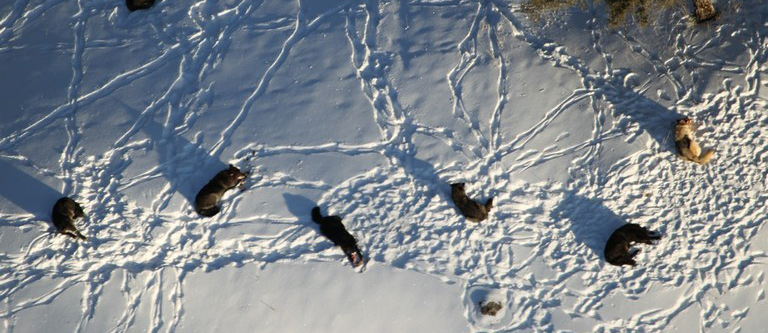Flying high above the Mollies’ wolf pack in Yellowstone’s Pelican river valley was a good place for me to contemplate the importance of wolves in the world’s first national park.
Similar questions have been pondered for years by researchers Dan MacNulty, Dan Stahler and Doug Smith—three leading wolf biologists who’ve studied the reintroduced wolves of Yellowstone. After four weeks living in the park’s Northern Range, working as a visiting scientist, I felt I was getting some clarity.
For answers, you have to look way back, more than 20 years ago, when wolves were first released in an ecosystem that hadn’t seen them for almost seven decades. It’s a story that’s wrapped up closely with the Yellowstone to Yukon vision; it’s about what wilderness really means and the value of protected areas in the vast landscapes of western North America.
Much of the inspiration for Y2Y was based on the wide-ranging movements of “Pluie” the wolf, a female that moved from near Alberta’s Banff National Park to Spokane, Washington, to the Bob Marshall Wilderness in Montana and back, covering a whopping 100,000-square-kilometer area.
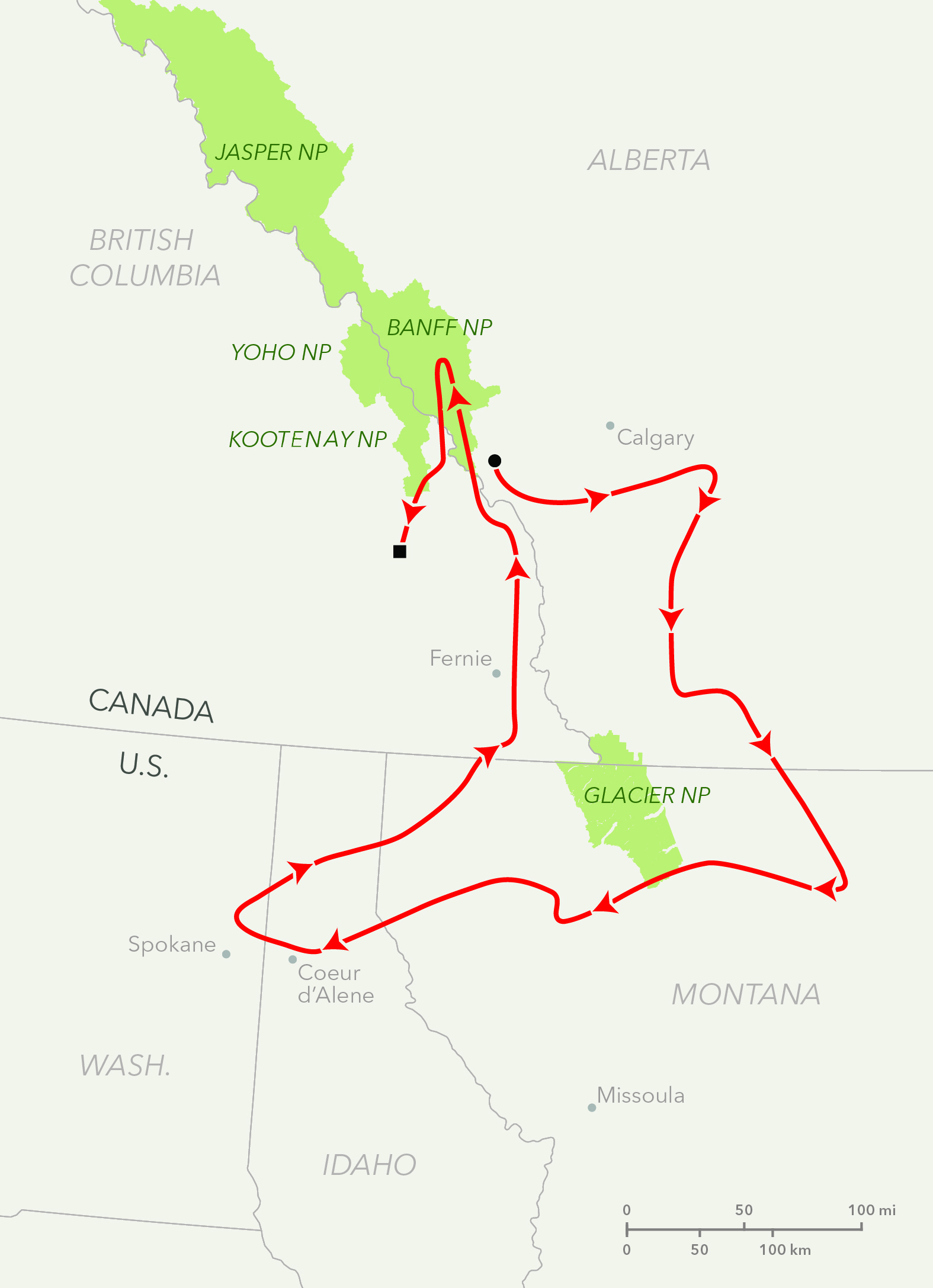
Ecologists have long known the false distinction of borders, but wolves have known it far longer than us.
To a wolf, the distance between Banff and Yellowstone is trivial. And yet, following the daily lives of Yellowstone’s wolves taught me they’re amongst the most protected, ecologically interactive of their kind in the entire Y2Y region.
To many, the origin of Yellowstone’s wolves is a footnote, two dots on a map in the far-off land labeled “Canada.”
In 1995, the first wolves were captured in Hinton, Alberta, and the second batch came a year later from Fort St. John, British Columbia. They quickly far exceeded all expectations, and came back with a force.
Ecosystems throughout the Northern Rockies responded to their presence in myriad ways, and Americans in the area grappled with the reality of living with wolves again.
The controversy that erupted was centered on two main themes: the real and perceived impacts to the livestock industry and big-game ungulate hunting.
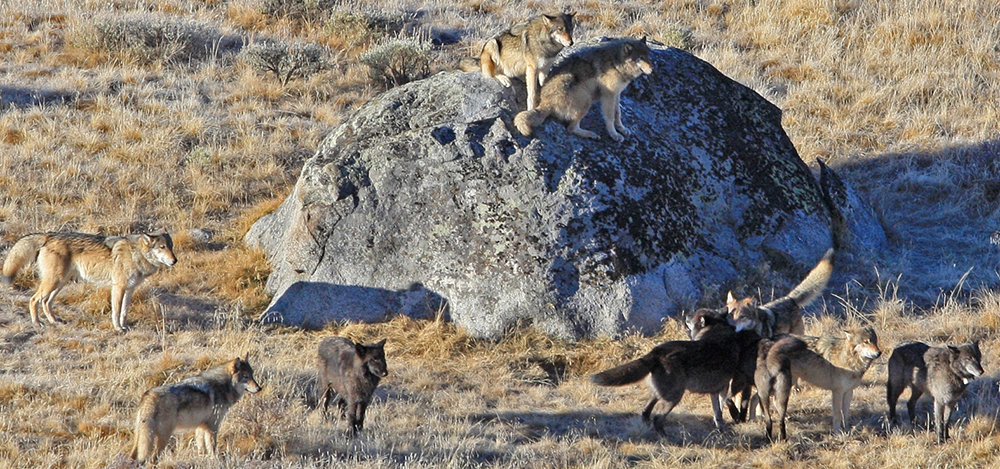
Despite these issues, Yellowstone’s wolves are better protected, managed and monitored than anywhere else perhaps in North America. Under the oversight of the USFWS, and, since delisting, by the State wolf management plans, Northern Rockies gray wolves grew to nearly 2,500, and expanded their range to include Oregon, Washington, and even Northern California.
However, in the Canadian portion of Y2Y, wolves are heavily harvested through trapping and hunting, and, increasingly, subject to culling in an attempt to recover threatened and endangered woodland caribou herds.
After decades of aggressive forestry and oil and gas development, woodland caribou in the mountains and boreal forest face a mounting extinction debt that wolves are being forced to pay.
While most research shows many wolf populations in the Canadian Y2Y are viable, this misses an important point. There are important differences between wolf populations persecuted by humans and those that are protected. Instead of humans killing wolves, wolves kill wolves in Yellowstone. Who gets killed is telling, and up to wolves to choose.
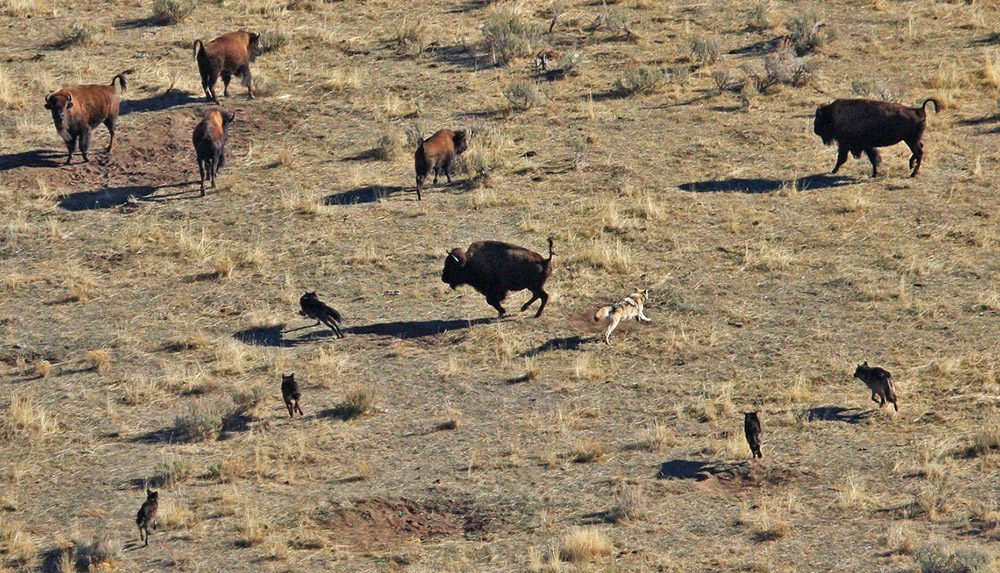
This natural process leads to older wolves in packs, and research has shown there are important benefits of being old. Male wolves five years and older contribute more effectively to hunting and to territory defense, while older females call the shots and drive day-to-day decision-making.
These benefits of age, wisdom perhaps, contribute to pack stability, wolf pack “culture,” and even to population dynamics. And yet few of these scientific discoveries had been observed before reintroduction in Yellowstone.
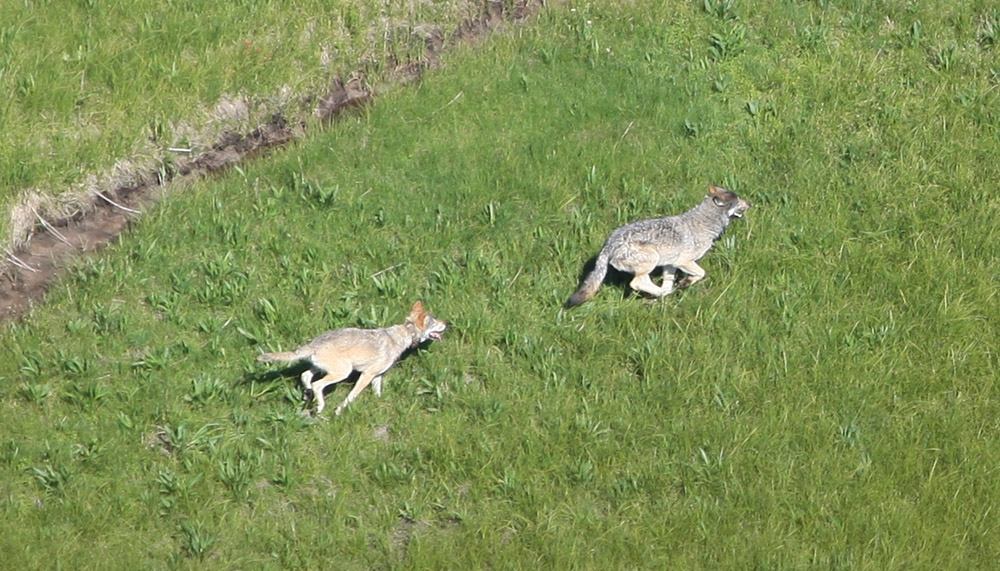
The 20-year project continues to confirm many similarly profound secrets of what wolves do in ecosystems when they are not killed regularly by humans. Their behavior has cascading effects throughout the landscape, affecting a wide range of species, from moose and beavers, to willow, aspen, songbirds and even trout. The dynamics of elk and bison, for example, are shifting, perhaps in response to wolf predation.
Earlier research in Banff showed these same dynamics, called trophic cascades, but the high-profile work in Yellowstone has broadly popularized these effects. In this context, the lesson that protected areas can serve as valuable ecological baselines for other regions remains as relevant now as when it was first proposed more than two decades ago.
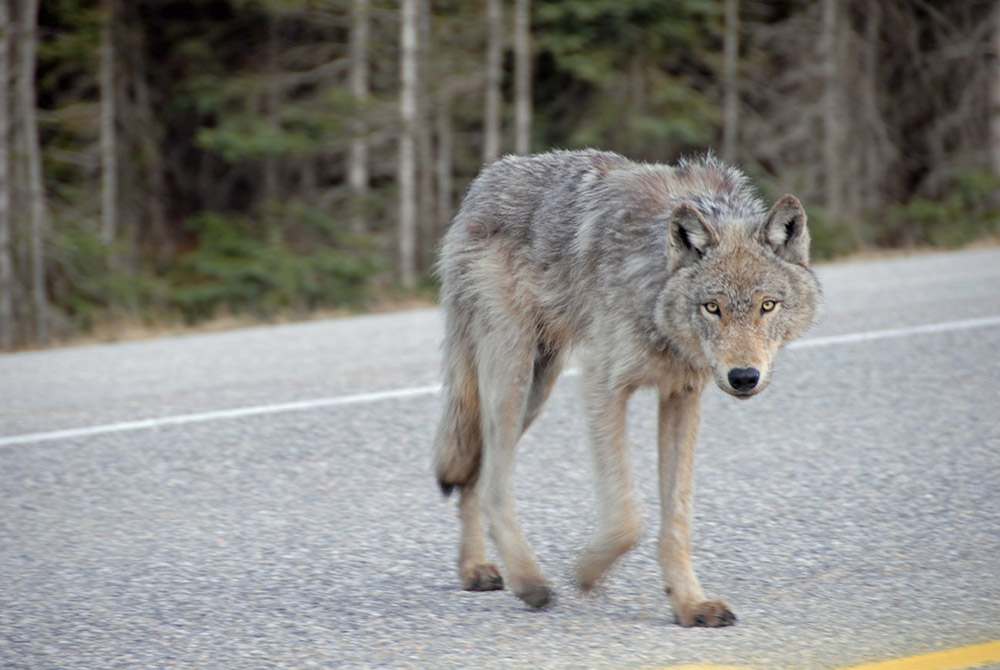
Yellowstone’s wolves emphasize the importance of large protected areas that Y2Y was founded upon. Throughout Banff, Jasper and B.C.’s Muskwa-Kechicka, in the dynamics of wolves and their prey, we should hear the echo of the legacy of wolf reintroduction.
Back in the Pelican valley, I watch as wolves feed on a bison they likely killed the day before.
I have hiked, paddled, driven, hunted and skied throughout the Yellowstone to Yukon chain. But nowhere along it, even within the region’s largest protected areas, is there as large a wolf population that is as well protected as Yellowstone’s. And we have a lot to learn from them.
— Written by Mark Hebblewhite, ecologist and Y2Y board member.
